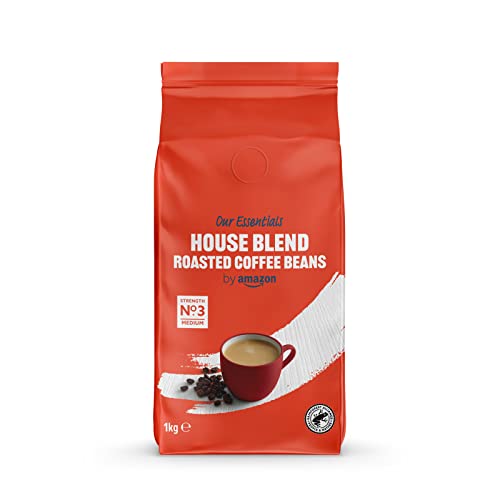Starbucks Coffee Beans 1kg
Starbucks was a cozy café located in Seattle, Washington before it became famous for its Peppermint Mochas and red holiday cups. The company's founders were focused on selling whole bean coffee but they weren't aware of the potential of espresso drinks.
Schultz changed everything. He was determined to demonstrate his roasting and mixing skills.
Origin
Before Starbucks coffee beans make it to your cup, they've been through a long and winding trek. Almost all of the world's coffee beans are grown in a region known as the Coffee Belt, which stretches across the globe between Tropics of Cancer and Capricorn. The taste of coffee beans is affected by the climate, soil and the culture of the region. Starbucks sources its coffee from more than 30 countries around the globe.
Most Starbucks coffees come from three regions: Latin America, Africa and Asia-Pacific. These regions are renowned for their full-flavor and balanced of body and acidity. Starbucks also purchases coffee from St. Helena in the South Atlantic Ocean, a volcanic tropical island paradise.
The Starbucks's coffee beans are and perfectly roasted giving them a smooth and delicious taste. The coffee beans are ground into a fine powder, which is ready to be brewed. The powder is then mixed with water and poured into a cup to make an espresso drink that is delicious. machu picchu coffee beans 1kg is a cup full of flavor and energy.
Starbucks stores offer a variety of single-origin beans. While the majority of Starbucks coffees come from blending different beans, they also have some varieties made from one bean. Single-origin Starbucks coffees are available in various flavors, including fruity and chocolatey sweet and nutty. Certain single-origin coffees are certified organic.
Although Starbucks's beans come from all across the globe, they have to meet certain requirements to be considered specialty coffee. The term "specialty coffee" was first used in the 1980s, as roasters and cafes started experimenting with lighter roasting, manual methods, and transparent source. Starbucks did not begin making its coffee sourcing decisions based on these standards, but it has since adopted these standards.
In addition to ensuring its beans are grown in a responsible way, Starbucks works to improve the lives of the people who cultivate their coffee. It pays its farmers a premium above market price and assists them in investing in their communities. It also promotes sustainability, and works to reduce wastage. This has led to the development of new coffee-growing techniques and practices that protect the environment.
Roast
Starbucks roasts beans in large quantities and buys the beans in large quantities. The roasting process can take between 10 and 15 minutes and the result is dark roasted beans. Dark roasted beans possess an intense flavor and a full body. The beans are ground and then delivered to supermarkets and stores in the form of coffee grind. This ground coffee is bitter and is not the ideal choice to make the perfect cup. Most people add lots of sugar, cream or milk or flavorings, as well as whipping cream to their coffee. This will not cover the bitterness of the coffee, but it does make the drink more appealing.

The beans begin to steam once they are placed in the roaster for the first time due to their internal moisture. The "first crack" is a distinct sound that signals the start of the roasting process. At this point, the sugars begin to caramelize and bound-up water escapes. In this stage the structure of the bean is broken down and the oil begin to migrate outward. The final stage is the time where the majority of coffees are regarded as a city roast.
The beans that have been roasted are cooled and separated from any stones, or other impurities which may have escaped from the roaster. The beans are then checked by hand and then bagged to be sold. Some beans have a dark spot called"quaker. The beans didn't change color and tasted burnt. This is a common phenomenon and does not suggest that the coffee is bad.
Most often, beans are roasted in batches, as small as 20 pounds at each time. They are referred to as "micro-lots". This is because each coffee is roasted to specifications created by the Starbucks team of masters of coffee. The team of coffee experts creates unique profiles that are used by all Starbucks(r) roasting facilities across the world. These profiles help to ensure that each cup of coffee brewed will be consistent and have the same amount of body and flavor.
Flavor
Starbucks purchases their coffee directly from the farm where they are grown in order to help improve the quality of their coffee and ensure an ethical source. They also plant an entire coffee plant for every one pound of beans sold. The beans are not branded with their origins, however certain blends are. Veranda is from Sumatra; Komodo Dragon is from Indonesian; and Anniversary is a blend of african and central american beans. The beans have a unique flavour profile and brew smooth cups with delicately balanced sweetness and smoothness. Each sip unveils a symphony of flavours that leave a long, delicious taste on your tongue.
Weight
The weight of Starbucks beans 1kg is determined by the blend. A Starbucks House Blend, for instance, weighs 14 oz per pound. A pound of Espresso-roast beans at Walmart however weighs 16 ounces. This translates into an increase of 67% at Starbucks in comparison to Wal-Mart.
Starbucks' Pike Place Roast is named after the famous Seattle marketplace. Its medium-light roast offers the perfect balance, sweetness and smoothness in each cup. This blend, made with beans from Latin America is perfect for Americano or espresso. This gourmet blend is packaged in a FlavorLock package to preserve and protect the flavor. This is Starbucks their signature coffee. A great choice for all coffee lovers! Made from 100% Arabica beans. This is a great present for Starbucks customers.
